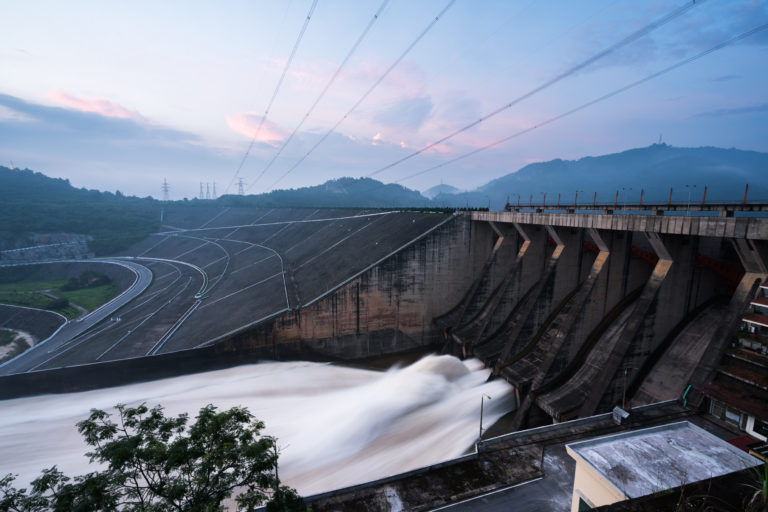COP26: UN human rights experts highlight continued human rights impacts of dams
By: Waterkeeper Alliance

Calls mount for UN climate financing mechanisms to exclude hydropower
As negotiators convened at COP26 in Glasgow attempt to break the deadlock on emissions cuts and financing mechanisms, a diverse set of voices are calling for the UNFCCC to exclude hydropower from consideration, citing dams’ grave human rights and climate impacts.
A statement issued at COP by several UN Special Rapporteurs, which are mandated by the UN Human Rights Council to investigate human rights concerns, called out the unaddressed severe human rights impacts of dams. “Studies have shown that up to 80 million people have been displaced by dams and nearly half a billion people have been affected downstream,” said Pedro Arrojo-Agudo, UN Special Rapporteur on the Human Rights to Safe Drinking Water and Sanitation in attendance at COP-26. “At a time when governments are set to embark on a new wave of hydropower and large dams, from our point of view from the UN, we are asking governments to reflect on the track record of dams. This is not green energy.”
These concerns are shared by others. Today, 340 organizations from 78 countries delivered a declaration to the UNFCCC demanding that hydropower be excluded from UN climate finance mechanisms, whose future is currently under negotiation in Glasgow. The groups, representing civil society, Indigenous communities, and scientists, warned that scarce climate dollars could be wasted if the implementation plan for the Paris Agreement renews previous carbon trading schemes that incentivized large dams.
“Hydropower is uniquely poorly suited to address climate change,” said ecologist Philip Fearnside of Brazil’s National Institute for Research in Amazonia. “Dams are virtually never ‘additional’ (they are being built regardless of subsidies from carbon credit), they are increasingly vulnerable to climate-change-induced droughts and floods, and they are significant emitters of methane.” In the Methane Pledge affirmed last week – one of few concrete announcements from COP26 thus far – over 100 governments agreed they must urgently curb methane emissions to forestall the worst impacts of climate change. Methane’s warming effect is 86 times more potent than carbon dioxide in the near term.
Meanwhile, Indigenous Peoples attending COP26 have been vocal in condemning false solutions to climate change, including hydropower, which have disproportionately impacted Indigenous populations. Indigenous Peoples would bear the brunt of a new wave of hydropower that industry proponents hope to unleash as negotiations continue over how to pay to address climate change, and what qualifies for climate funding.
“I see the suffering, pain, and frustration of families who fought tirelessly to defend the BioBío River and our lands that were flooded as a result of the reservoirs. The dams devastated our lands, forests, rivers, and culture. The place where our families gathered, lived and were buried was flooded. I dream of children living without repression, who can enjoy free-flowing rivers and everything that the Mapu (earth) and our ancestors have given us to live,” said Fernanda Purrán of the Mapuche-Pehuenche Tribe and Director of Ríos to Rivers Chile.
Despite the widely documented adverse impacts that dams have wrought on communities around the world, industry groups such as the International Energy Agency and the International Hydropower Association have been visible in Glasgow in their calls for expanding hydropower. Conservation scientist Eugene Simonov from Rivers without Boundaries challenged their claims at several events. “The call by some industry groups to grow global hydropower by 60% likely means damming all remaining free-flowing rivers, which would be a tremendous blow for global freshwater biodiversity,” Simonov said.
While the threat of hydropower proliferation remains a serious global risk, some rivers are being recovered by removing harmful dams, and activists have brought success stories and hopeful progress to the COP. “Indigenous Peoples steward and protect over 80% of the world’s biodiversity even though we are only 5% of the world’s population,” said Paul Robert Wolf Wilson, a Klamath Tribes Member and Chief Storyteller for Ríos to Rivers. “Yet, you seldom see us on the world stages or in key decision-making arenas despite our roles in protecting the remaining biodiversity and having stopped and delayed greenhouse gas pollution equivalent to at least one-quarter of annual U.S. and Canadian emissions. As a member of the Klamath Tribes, I look forward to the largest dam removal in world history in 2023. This hard-fought battle will return salmon and restore biodiversity to our ancestral territory in Oregon for the first time in more than 100 years.”
Given the need for adapting to the mounting impacts of climate change, the Declaration also emphasizes the positive effect of healthy rivers in building resilience to protect biodiversity, the water and carbon cycles, and local communities. “Instead of damming the rivers that help sustain us, climate funds should be used to restore rivers and promote protecting river ecosystems and communities,” added Chris Wilke, Global Advocacy Manager for Waterkeeper Alliance.
Siziwe Mota, Africa Director of International Rivers, adds, “As the world confronts the climate crisis, mass biodiversity loss, water scarcity, and the pandemic, we need to move beyond business-as-usual approaches like hydropower to deliver real solutions.”
Find the full Declaration here: https://intlrv.rs/RiversForClimateDeclaration